Despite critical advancements in the tech solutions available to conservationists around the world, many existing tools are cost-prohibitive in the landscapes that need them most. Additionally, those who create low-cost and open-source alternatives to pricey market tech are often operating on tight budgets themselves, meaning they have limited resources for the promotion of their solutions to a wider market. We need increased communication around these solutions to highlight their availability, share lessons learned in their creation, and avoid duplication of efforts.
This group is a place to share low-cost, open-source devices for conservation; describe how they are being used, including what needs they are addressing and how they fit in to the wider conservation tech market; identify the obstacles in advancing the capacity of these technologies; and to discuss the future of these solutions - particularly their sustainability and how best to collaborate moving forward.
Header image: Shawn F. McCracken
Freaklabs
I'm an engineer and product designer working on wildlife conservation technology.



- 0 Resources
- 273 Discussions
- 14 Groups
- @ravi1089
- | He
IIITian.Solving problems in wildlife through Technology
- 0 Resources
- 0 Discussions
- 2 Groups
- @TaliaSpeaker
- | She/her
WILDLABS & World Wide Fund for Nature/ World Wildlife Fund (WWF)
I'm the WILDLABS Research Specialist at WWF-US

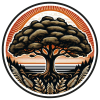

- 13 Resources
- 56 Discussions
- 24 Groups
Wildlife Drones
Wildlife Drones has developed the world’s most innovative radio animal-tracking system using drones so you can track your radio-tagged animals like never before.


- 11 Resources
- 8 Discussions
- 32 Groups
Serendipity Wildlife Foundation
CEO, Serendipity Wildlife Foundation
- 0 Resources
- 0 Discussions
- 4 Groups
- @bradnahill
- | he / him
SEE Turtles
Brad has worked in sea turtle conservation & ecotourism for 20+ years. He is the lead writer of Sea Turtle Research and Conservation and co-author of the Worldwide Travel Guide to Sea Turtles. He has won the President's Award from the International Sea Turtle Society.
- 1 Resources
- 4 Discussions
- 6 Groups
- @jcaris
- | hi/him
Smith College & Cummings School of Veterinary Medicine at Tufts University
Senior Drone Data Scientist, Tufts University; Former Director of the Spatial Analysis Lab at Smith College. Teaching, learning, and collaborating with brilliant students & faculty
- 0 Resources
- 0 Discussions
- 9 Groups
- @ZoeDagan
- | She/her
I'm Zoe, an ecologist at the intersection of SaaS, conservation, and community science. I build programs and advance projects that accelerate solutions to our most urgent climate and conservation challenges.

- 0 Resources
- 4 Discussions
- 10 Groups
- @crazybirdguy
- | Him
Field Biologist at Yayasan Cikananga Konservasi Terpadu, Indonesia, with experience and interest mainly in ornithology, citizen science and bioaccoustic
- 0 Resources
- 6 Discussions
- 12 Groups
FruitPunch AI
CTO and Founder of FruitPunch AI




- 0 Resources
- 4 Discussions
- 11 Groups
- @stefan_istrate
- | he/him
Machine Learning Researcher & Nature Photographer. Building conservation tech for biodiversity monitoring at Wildlife Insights.

- 0 Resources
- 2 Discussions
- 9 Groups
Apasionado por la vida en el campo y la electronica aplicada a proyectos de conservacion



- 0 Resources
- 37 Discussions
- 3 Groups
The Innovation in Practice edition of Methods in Ecology and Evolution is still seeking proposals about conservation technology
6 March 2023
Article
Rainforest Connection (RFCx) is bringing back the Arbimon newsletter for 2023! We're excited to share new features and tools of the platform, what's coming up, and some insights into our projects on bioacoustic...
23 February 2023
Technology to End the Sixth Mass Extinction. Salary: $104k-144K; Location: Washington DC or Seattle WA, potential hybrid; 5+ years of Full stack development experience; Deadline March 15th - view post for full job...
10 February 2023
Careers
Join the Arribada Initiative! We have a unique opportunity for a software developer to create mobile / desktop applications and intuitive user interfaces that assist researchers and fieldworkers to conserve wildlife.
16 January 2023
Using satellite imagery to detect and classify the severity of cyanobacteria blooms in small, inland water bodies.
15 December 2022
As the FieldKit hardware ecosystem grows, Conservify is seeking a Junior Electrical Engineer to assist with testing, troubleshooting, prototype development, and developing production test fixtures for our growing...
9 December 2022
Careers
Conservify is seeking a hands-on Senior Software Engineer with front end and back end experience developing rich web and mobile applications, and a strong desire to build a best-in-class product that stands out in both...
9 December 2022
Conservify is seeking a hands-on Senior Product and Production Manager with strong interpersonal and organizational skills to remotely lead a small seasoned team of thinkers, designers and engineers who are shaping the...
9 December 2022
Conservation partnership launches new award to advance biodiversity conservation from space
5 December 2022
Boost cons tech capacity at an international NGO! Fauna & Flora International is offering a paid three-month internship to consolidate and share best practices for the application of emerging hardware and software...
26 August 2022
Careers
Job opening at ARISE, an innovative program in the Netherlands to build a digital infrastructure for biodiversity data and services
19 August 2022
March 2024
event
November 2023
event
| Description | Activity | Replies | Groups | Updated |
|---|---|---|---|---|
| Thanks for sharing this @nkundiushuti ! I think this post would be better suited as an event, that way it will show up on the WILDLABS event calendar page. Let me know if you have... |
|
Acoustics, AI for Conservation, Biologging, Build Your Own Data Logger Community, Community Base, Early Career, Ethics of Conservation Tech, Marine Conservation, Open Source Solutions | 1 day 5 hours ago | |
| Hi Steph, We appreciate the support! Thanks for the tag and your help managing the community!Patrick |
|
Sensors, Acoustics, Conservation Dogs, Emerging Tech, Open Source Solutions | 1 month ago | |
| Congratulations! My first hydromoth was just arrived yesterday and so excited! Looking forward for the update from your project!!! |
|
Acoustics, Biologging, Climate Change, Conservation Tech Training and Education, Data management and processing tools, Emerging Tech, Open Source Solutions, Protected Area Management Tools, Sensors, Software and Mobile Apps | 1 month ago | |
| Hi @zhongqimiao ,Might you have faced such an issue while using mega detectorThe conflict is caused by:pytorchwildlife 1.0.2.13 depends on torch==1.10.1pytorchwildlife 1.0.2.12... |
+6
|
AI for Conservation, Camera Traps, Open Source Solutions | 1 month 1 week ago | |
| Hi, this is pretty interesting to me. I plan to fly a drone over wild areas and look for invasive species incursions. So feral hogs are especially bad, but in the Everglades there... |
|
AI for Conservation, Camera Traps, Open Source Solutions, Software and Mobile Apps | 1 month 2 weeks ago | |
| Gotcha, well I look forward to seeing future iterations and following along with your progress!! |
|
Autonomous Camera Traps for Insects, AI for Conservation, Emerging Tech, Open Source Solutions | 1 month 2 weeks ago | |
| 'Most importantly, we have to make it play a MIDI version of the DoctorWho theme song when you arm the device. That has to be the #1 feature if you ask me!' Seconded! |
+9
|
Acoustics, Biologging, Emerging Tech, Open Source Solutions, Sensors | 1 month 2 weeks ago | |
| Hi Danilo. you seem very passionate about this initiative which is a good start.It is an interesting coincidence that I am starting another project for the coral reefs in the... |
|
Acoustics, AI for Conservation, Biologging, Camera Traps, Citizen Science, Climate Change, Community Base, Connectivity, Drones, Emerging Tech, Human-Wildlife Conflict, Open Source Solutions, Sensors, Software and Mobile Apps, Wildlife Crime | 4 months ago | |
| I would recommend going with Ubiquity 2.4Ghz devices which have performed relatively well in dense foliage of the California Redwood forests. It took a lot of tweaking to... |
|
Acoustics, AI for Conservation, Connectivity, Open Source Solutions | 4 months 2 weeks ago | |
| Fire detection is a sort of broad idea. Usually people detect the products of fire, and most often this is smoke.Many home fire detectors in the US use a radioactive source... |
|
Community Base, Conservation Tech Training and Education, Data management and processing tools, Ethics of Conservation Tech, Human-Wildlife Conflict, Open Source Solutions, Protected Area Management Tools, Sensors, Wildlife Crime | 4 months 2 weeks ago | |
| Super cool! thank you for sharing! |
|
Biologging, Open Source Solutions | 4 months 2 weeks ago | |
| I dont have anything written up but I can tell what parts we used and how we tested.Its pretty straightforward, we used this M10 Enclosure Vent from Blue Robotics: Along with... |
|
Build Your Own Data Logger Community, Acoustics, Camera Traps, Climate Change, East Africa Community, Marine Conservation, Open Source Solutions, Protected Area Management Tools | 4 months 2 weeks ago |
Automatic extraction of temperature/moon phase from camera trap video
29 November 2023 1:15pm
1 December 2023 2:38pm
Do you need to do this for just one project? And do you use the same camera make/model for every deployment? Or at least a finite number of camera makes/models? If the number of camera makes/models you need to worry about is finite, even if it's large, I wouldn't try to solve this for the general case, I would just hard-code the pixel ranges where the temperature/moon information appears in each camera model, so you can crop out the relevant pixels without any fancy processing. From there it won't be trivial, exactly, but you won't need AI.
You may need separate pixel ranges for night/day images for each camera; I've seen cameras that capture video with different aspect ratios at night/day (or, more specifically, different aspect ratios for with-flash and no-flash images). If you need to determine whether an image is grayscale/color (i.e., flash/no-flash), I have a simple heuristic function for this that works pretty well.
Assuming you can manually define the relevant pixel ranges, which should just take a few minutes if it's less than a few dozen camera models, I would extract the first frame of each video to an image, then crop out the temperature/moon pixels.
Once you've cropped out the temperature/moon information, for the temperature, I would recommend using PyTesseract (an OCR library) to read the characters. For the moon information... I would either have a small library of images for all the possible moon phases for each model, and match new images against those, or maybe - depending on the exact style they use - you could just, e.g., count the total number of white/dark pixels in that cropped moon image, and have a table that maps "percentage of white pixels" to a moon phase. For all the cameras I've seen with a moon phase icon, this would work fine, and would be less work than a template matching approach.
FYI I recently wrote a function to do datetime extraction from camera trap images (it would work for video frames too), but there I was trying to handle the general case where I couldn't hard-code a pixel range. That task was both easier and harder than what you're doing here: harder because I was trying to make it work for future, unknown cameras, but easier because datetimes are relatively predictable strings, so you know when you find one, compared to, e.g., moon phase icons.
In fact maybe - as others have suggested - extracting the moon phase from pixels is unnecessary if you can extract datetimes (either from pixels or from metadata, if your metadata is reliable).
5 December 2023 10:09pm
camtrapR has a function that does what you want. i have not used it myself but it seems straightforward to use and it can run across directories of images:
https://jniedballa.github.io/camtrapR/reference/OCRdataFields.html
PiCAM: A Raspberry Pi-based open-source, low-power camera system for monitoring plant phenology in Arctic environments
1 November 2023 5:34pm
Lead Data Engineer - Climate Solutions, Open Earth
25 October 2023 11:07am
Restoring the Mara Elephant Population Using Coexistence Tech Solutions with Mara Elephant Project's Wilson Sairowua
 Wilson Sairowua
Wilson Sairowua
20 October 2023 1:31pm
27 May 2024 3:54pm
28 May 2024 8:12am
Unravelling freshwater turtle activity with an open source, low-cost accelerometer
6 October 2023 1:04pm
Experience with SeeedStudio T1000 as tracker and data logger.
4 September 2023 1:42pm
8 September 2023 4:37pm
ooh very cool Salman! Amazing how much tracking devices have come down in price over the years and LoRa/LoRawan is just such a perfect fit for GPS data. Thanks heaps for sharing.
All the best,
Rob
CIEEM 2023 Autumn Conference: Modernising Ecology: Techniques and Approaches
5 September 2023 1:59pm
Mobile App. Developer / Gibbon Research
24 August 2023 9:59am
Catch up with The Variety Hour: August 2023
14 August 2023 11:50am
Making Waves: Open Hardware as a Solution to Scaling up Bycatch Mitigation
9 July 2023 12:14pm
AI for Eagles Challenge
7 July 2023 10:03am
pneumatic artificial muscle applications in conservation tech?
5 July 2023 6:59pm
New Add-ons for Mbaza AI
4 July 2023 12:00pm
Catalog of open source conservation projects
30 June 2023 4:40pm
3 July 2023 2:53am
There is the Conservation Tech Directory! There's an 'open-source' tag you can search by too.
Making Waves: Open Hardware as a Solution to Scaling up Bycatch Mitigation
2 July 2023 11:24am
Sustained Effort: The Environmentalist’s Dilemma
 Jacinta Plucinski
Jacinta Plucinski
21 June 2023 9:00am
PhD Position in Deep Learning for Biodiversity Monitoring: Custom Imaging Platform and Deep Learning to Classify and Phenotype Earthworms
21 June 2023 8:23am
Information Session: Technology Testing to Mitigate Human-Elephant Conflict in West Bengal
19 June 2023 11:07pm
Innovation wanted: Technology Testing to Mitigate Human-Elephant Conflict in West Bengal
19 June 2023 10:54pm
The Wildlife Society Conference
19 June 2023 5:59am
Wildlife Monitoring Engineer
8 June 2023 4:54pm
Panthera: Monitoring Wildlife with Open-Source Data Management Tools
 Panthera
Panthera
11 May 2023 5:52pm
Call for survey participants (AI/ML practitioners)
19 April 2023 3:17pm
Global shortage of Raspberry Pis - What are the alternatives
3 November 2022 10:27am
28 March 2023 9:37pm
Have you considered Arduinos?
29 March 2023 10:13am
UPDATE: The Banana Pi didnt work out for us as it was not possible to track back all the components and ensure that they were responsibly sourced. The Rock board did work for us and we were able to port our system onto this. We will be rolling out units using this over the summer. It also looks like Raspberry Pis are coming back on line and we were able to secure a bulk order for deliver mid-summer
29 March 2023 10:14am
Yes, but for our needs that are not powerful enough
$500 micro grants for open science events
10 March 2023 1:19pm
The gathering for open science hardware is giving up grants for people putting on events that promote open science hardware
A simple and free application!
https://forum.openhardware.science/t/usd-500-microgrants-available-for-…
Proposals wanted for Innovation in Practice
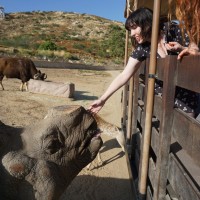 Ellie Warren
Ellie Warren
6 March 2023 10:34pm
Moveapps: EMAC23 Coding Challenge
3 March 2023 7:58am
3 March 2023 3:12pm
Super initiative! I hope you get a lot of entries to this coding challenge!
6 March 2023 7:53am
Thanks Lars! Look forward to any entries from you and your colleagues. If you have an questions or suggestions, let me know.
6 March 2023 1:11pm
Hi Andrea! Although I am a keen user and observer of the Moveapps initiative, my R or Python coding skills are next to non- existing. I am therefore not likely to be contributing this time... Some day perhaps ;)
USD500 available for your workshop
6 March 2023 1:30pm



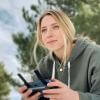























































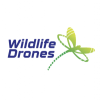




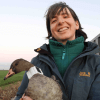

1 December 2023 2:35pm
Hi Lucy
As others have mentioned, camera trap temperature readouts are inaccurate, and you have the additional problem that the camera's temperature can rise 10C if the sun shines on it.
I would also agree with the suggestion of getting the moon phase data off the internet.